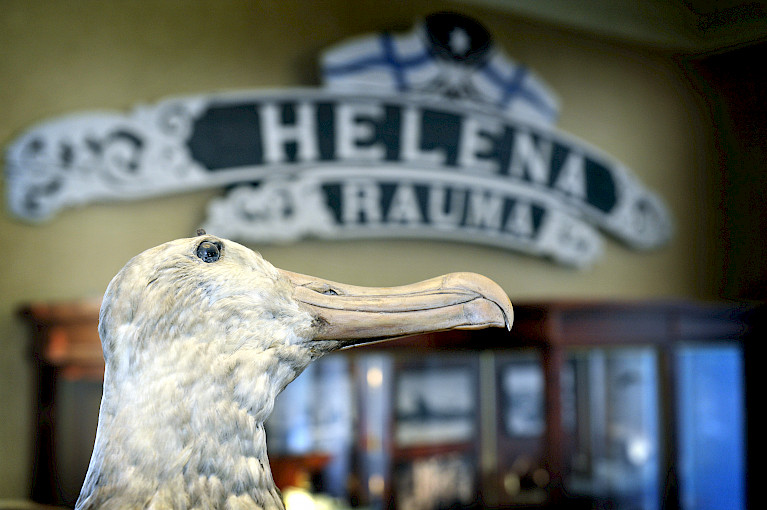
The quick route
Entry Hall
Säppi Lighthouse
The new Säppi lighthouse was built with brick and later reinforced with ferroconcrete. The lighthouse was finished in 1873, and the lens system was constructed in Paris the same year; you can see the lens system above the entrance. The houses for the lighthouse master, two lighthouse assistants and the pilots were also built, so several families lived on the small island. The lens was originally fuelled by turnip oil, later petroleum, and a gas bulb was mounted in 1930. The lens system operated until 1962, when the Säppi Lighthouse was automated. The people left the island, which is now the home of mouflon sheep that were taken there in 1949.
Big Hall
The Hoppet’s dummy crew
Above the dummy crew showcase, you can see the photo of the crew, after which artist Sirpa Ala-Louko created the dummies in 2011. The photo shows the crew of barque the Hoppet in Hobart, Tasmania, in January-February 1899.
The touchscreen of the showcase allows you to hear a story, a song or perhaps a poem by each person in the photo. The respective story, song or poem is not necessarily presented or experienced by the exact sailor, but they are based on the versatile archive sources of the Museum, and hence they originate from seafarers.
Whale bone
Hanging above you, you can see the lower left jawbone of a sperm whale, brought as a souvenir from the Azores in 1890.
Maritime School -room
A maritime school worked in this building from 1900 to 1969. Instruction in seafaring started in Rauma in 1880 already, and is continuing in new premises near the port.
Until the 1960’s, the education was for ship’s officers only, i.e. mates and sea captains. The students had served at sea at least for a couple of years before entering the school. Most of the instructors were ex sailors. You can see a lot of class photos on the walls from the shift of the century to about the 1930’s.